- How to setup your software
- Sample MLA Paper – normal paper
- Sample MLA Paper – has cover page
- Sample APA Paper
- Sample Chicago Paper
- Sample CSE Paper
- APA Format Guidelines
- MLA Format Cover Page
The Modern Language Association (MLA) does not require you to create a cover page when you complete your research paper, but some instructors may require it.
If your instructor requires your paper to have a cover page, here is how to make it (very easy). This cover page should include: your school name, your research paper title, your name, your class, your professor name and your paper due date.

How to Format Your MLA Cover Page:
- This page is double spaced and the letters are centered.
- Font: Times New Roman
- Font size: 12
- The first letter of each word should be capitalized with the exception of very short words such as: the, and, of, or, a, an, in, to, for. Note: the first letter of the first word should be capitalized, regardless of what kind of word it is.
- Type the name of your university or college.
- Skip to about one-third of the page and type your research paper title, include a subtitle if you have.
- Skip several lines down and type your name, your course name and number, your instructor name and your paper’s due date.
Sample MLA Format Cover Page:

Sample MLA Format Cover Page
Alternate First Page:
If your instructor requires a cover page, you would omit the main heading on your first page. Here is an example of the first page if a cover page is used. You still need your last name and page number on the first page and every other page.

Sample MLA Format First Page with Cover Page

Sample MLA Paper:
Visit here for a sample paper with the cover page. The cover page can vary slightly. This paper also has the outline page for your sample.
If you find this website useful, please share with a friend:
How do I get the header on the second page on down? I tried editing it but then it takes the header away from all the pages.
In word select the header then go to: Header & Footer>Page Number>Format Page Numbers>Page Numbering>Start at page>Set to 0
How do I get the header on the second page on down? I tried editing it but then it takes the header away from all the pages. I am using windows. Also, the page numbers are not working for me either. Please help me.
How should I start the page after my cover page?
https://mlaformat.org/mla-format-heading/
Thank you so much Stephen !!! Helped a lot in my written assignments 🙂
Great site ! Thank you so much. Just returned to school to complete my bachelors and needed a little refreshing. Has all the information I needed !
Thanks so much for all of the great information! I have not used MLA before and was a little panic stricken. I have found all of my answers here. This is now saved to my favorites so I can use it regularly. Thanks again!
Should the lines on the cover page be double spaced?
Thanks so much for the picture of the cover page it has helped a lot. But, I was wondering do I still need to put my Title at the top of every page after the header?
Hello Lydia. You do not.
After your cover page, your next page’s heading should look like the “Alternate First Page” above.
After the “Alternate First Page” => your next pages should have “The Inner Pages” heading: https://mlaformat.org/mla-format-heading/
Sample paper: https://mlaformat.org/mla-format-sample-paper-with-cover-page-and-outline/
hey Lydia you don’t need to but if you want to you can
Thank you so so much. I love the simplicity of the website, very easy to understand. I finally have a cover page for my paper!!
I love this website!! It helped so many times with all my essays. I’m working on a college one and this was very useful. Thank you soo much. And thanks for the examples im a visual person I needed that 🙂
Hi Kaylin, I am glad you find this site useful. Take care!
By the way (sorry i forgot!) for the coverpage, would the text font be 12 times new roman???
You can set everything 12, Times New Roman. Or you can set the Title a little larger than 12, that should work too.
In the example above, I have the title larger than 12.
Here is an example with everything set at 12.
Thank you so much for your help on this useful website! I found it very organized and I’m very glad that I came across this particular article. Thanks!!!!!!!:)
I have a question regarding the cover page and the following pages. If I have a cover page as the example provided, do I still need the heading on the next page? And should the pages after that contain my last name on the top left as the header does on the on the previous pages? or do I not need the header at all if I have the cover page and just my name?
Excellence question, Stella! I have updated this article with information on the first page if a cover page is used. Please see “Alternate First Page” above.
You can omit the main heading but you still need your last name and page number on the first page and all subsequent pages. Take care!
Leave a Comment
Current ye ignore me @r *
Leave this field empty
Next post: MLA Format Heading
Previous post: MLA Format Websites
- The Format of the Research Paper
- MLA Format Headings
- MLA Citations
- MLA Format Works Cited
- MLA Format FAQs
- MLA Format Sample Paper
- MLA Sample Paper w/ Cover and Outline Pages
HOW TO SETUP YOUR SOFTWARE
- MLA Format using Google Docs
- MLA Format Microsoft Word 2016
- MLA Format using Pages on Mac
Copyright © 2011–2024 • MLA Format • All rights reserved. Currently, MLA is at its 8th edition. This website has no official relationship with the Modern Language Association and is not endorsed by the MLA.
Home / Guides / Citation Guides / MLA Format / Creating an MLA title page
Creating an MLA title page
If you are writing a research paper in MLA style 9th edition for a class, then you may need to include an MLA format title page. An MLA title page is the cover of your paper, and they aren’t always required. So, how do you make a title page that adheres to the MLA formatting guidelines, and how do you know when you need one?
This page contains all the information you need to know to make the perfect MLA title page, so that you can prove that you are an expert researcher and get the best possible grade. This MLA sample paper will show you how the rest of your paper should be formatted.
Here’s a run-through of everything this page includes:
Title page vs. MLA heading on first page
Title page / cover page, first page: mla heading (no title page), troubleshooting.
The current edition of the Modern Language Association (MLA) handbook does not require a title page , but your teacher, professor, or other reader may require one. In this case, you will need to know the differences between a title page and an MLA heading, and which one to use depending on your reader’s preferences. Other citation styles look slightly different, like this APA title page .
A title page, or a cover page, is a single page that comes before your MLA abstract (if required) and the content of your paper. It introduces your paper and quickly shows a reader the following information about your paper:
- author name (your name, since you wrote the paper)
- course information (if applicable)
It does not include any of the research paper itself.
First page with MLA heading
MLA format recommends adding an MLA heading to the first page of your paper. This contains the same information as a title page, but the information is formatted differently and is on the same page on which your actual research paper begins.
Unless otherwise specified by your instructor or teacher, this should be how you format your first page.
Before you start typing your MLA research paper title page, you will need to gather some information.
What you will need
If you are creating an MLA heading on the first page of your essay instead of a title page, you will need most of the same information, but you will format it differently.
To create a title page, you need to include:
- The name of your high school, college, or university (if applicable)
- The title of your paper
- The subtitle of your paper (if you have one)
- Your first and last name
- Your teacher or professor’s name (if applicable)
- The class name or course number (if applicable)
- The date the paper is due (in “day month year” format)
Formatting guidelines
Follow these formatting guidelines when typing your MLA title page:
- Double-spaced
- Times New Roman font
- Size 12 font
- The first letter of each word should be capitalized, with the exception of very short words such as the, and, of, or, a, an, for, in , etc. However, the first word should always be capitalized.
- Do not include a page number heading on your title page
Step-by-step instructions
Here are the steps you need to take to create the perfect MLA title page:
- At the top of the page, type the name of your high school, college, or university (if applicable).
- Skip down approximately one-third of the page and type the title of your research paper using title case.
- If you have a subtitle, type it on the line following the paper title.
- Skip down to the bottom third of the page and type your first and last name.
- On the following line, type the course name and number (if applicable).
- On the following line, type your instructor’s name (if applicable).
- On the following and final line, type the due date of your paper in “day month year” format.

Although it’s important to know how to create an MLA essay title page in case your instructor requires it, in most cases you will use an MLA heading on the first page of your paper instead.
Remember, you should only create a title page if your instructor requests it .
Otherwise, use these guidelines to create an MLA heading. If you create a title page, then you usually won’t need an MLA heading on your first page, but you should ask your instructor for their specific requirements.
To create an MLA heading on your first page, you will need to include some of the same information you would use for a title page, including:
- Left-justified text for MLA header
- Centered text for title
- Right-justified text for page number header
- In the top left corner of the first page of your essay, type your first and last name.
- On the following line, type the due date of your paper in “day month year” format.
- On the following line, switch from left-justified text to centered text and type the title (and the subtitle on the same line, if you have one) of your paper in title case. Do not italicize, underline, or place your essay title in quotation marks. Do not use quotation marks unless you are referring to other works in your title and need to enclose the referenced works in quotation marks.
- Your research paper should begin on the following double-spaced line.
- Create a right-justified text header one-half inch from the top of your paper that includes your last name and the page number.
- All pages of your paper should be numbered with your last name and the numerical page number. The page including your MLA header, title, and the beginning of your essay is page one (1).
- Your instructor may specify not to include a last name and page number header on your first page. Always follow your instructor’s guidelines.

Solution #1: What should I do if my paper is a group project?
If you have written a collaborative paper with multiple authors, list each author on your MLA title page or in your MLA heading in alphabetical order, with line breaks between each.
If your paper has multiple authors, omit the name from your page numbers in the upper-right corner of your MLA-format paper.
Example MLA heading for a group paper:

Example MLA title page for a group paper:

Solution #2: What should I do if my paper isn’t for a specific class?
If your paper is a thesis project for your degree, for example, or not for a specific class, you can omit that information from your MLA title page or MLA header.
Solution #3: Does my paper need a subtitle if I use a full MLA title page?
While an MLA title page allows for a subtitle beneath the title of your paper, it is NOT required to have a subtitle or make one up for your MLA title page.
If you didn’t intend to have a subtitle for your paper, there is no need to add a subtitle. Just leave that area of your MLA title page blank.
Solution #4: Will my MLA title page be part of my final page count?
A title page is not typically included in a paper’s final word count. Check with the teacher or professor assigning the paper to be sure, but it is highly unlikely a title page will count as a full page of your final paper.
Published October 25, 2020. Updated June 4, 2021
Written by Grace Turney , freelance writer and artist. Grace is a former librarian and has a Master’s degree in Library Science and Information Technology.
MLA Formatting Guide
MLA Formatting
- Annotated Bibliography
- Bibliography
- Block Quotes
- et al Usage
- In-text Citations
- Paraphrasing
- Page Numbers
- Sample Paper
- Works Cited
- MLA 8 Updates
- MLA 9 Updates
- View MLA Guide
Citation Examples
- Book Chapter
- Journal Article
- Magazine Article
- Newspaper Article
- Website (no author)
- View all MLA Examples
How useful was this post?
Click on a star to rate it!
We are sorry that this post was not useful for you!
Let us improve this post!
Tell us how we can improve this post?
The title page in MLA style gives basic information such as the name, the instructor’s name, the course name and number, the title of the paper, and the submission date. MLA style does not recommend using a title page unless specifically requested by your instructor; instead, it suggests creating a header.
The difference between a title page and a header in MLA style is that a title page appears as a page on its own before the main paper copy. A header, on the other hand, appears on the same page where paper copy begins.
Include the following elements on a title page. Follow the order as given below.
The university name
The title and subtitle of the paper
The course name and number
The instructor’s name
The submission/due date
If you are not required to create a title page, and only need a header, the following elements should be included in the header, in the order as listed:
While MLA does not generally recommend the use of a title page, some courses or professors may require it. The title page should include the university name, title of the paper, your name, the instructor’s name, the course name, and the submission or due date.
Formatting title page
MLA style does not have any specific guidelines for formatting a title page. However, you can use the below suggestions to format your title page if you are required to create one for your paper.
Page margins
All margins (top, bottom, left, and right) should be set at 1 inch.
The font should be clear and easy to read. A good option is Times New Roman font in size 12 pt.
Text on the title page should be double-spaced.
Elements of a title page
Include the following elements on the title page. Follow the order as given below.
Add a few blank lines before and after the title of the work. The title should be in title case and centered.
Beginning on the title page, the paper should also include a running head. The running head includes the your last name and the page number. This should be placed in the “header” area of the paper so that it is present on each page. Use the page number feature in your word processor so that the page number is generated automatically.
Example title page
Chegg University
Relationship Between Students and Their Teachers
Ishithaa Gopi
Psychology 127
Professor John Smith
21 September 2021
MLA Citation Examples
Writing Tools
Citation Generators
Other Citation Styles
Plagiarism Checker
Upload a paper to check for plagiarism against billions of sources and get advanced writing suggestions for clarity and style.
Get Started
Generate accurate MLA citations for free
- Knowledge Base
- MLA format for academic papers and essays
MLA Format | Complete Guidelines & Free Template
Published on December 11, 2019 by Raimo Streefkerk . Revised on March 5, 2024 by Jack Caulfield.
The MLA Handbook provides guidelines for creating MLA citations and formatting academic papers. This quick guide will help you set up your MLA format paper in no time.
Start by applying these MLA format guidelines to your document:
- Times New Roman 12
- 1″ page margins
- Double line spacing
- ½” indent for new paragraphs
- Title case capitalization for headings
For accurate citations, you can use our free MLA Citation Generator .
Download Word template Open Google Docs template
(To use the Google Docs template, copy the file to your Drive by clicking on ‘file’ > ‘Make a copy’)
Table of contents
How to set up mla format in google docs, header and title, running head, works cited page, creating mla style citations, headings and subheadings, tables and figures, frequently asked questions about mla format.
The header in MLA format is left-aligned on the first page of your paper. It includes
- Your full name
- Your instructor’s or supervisor’s name
- The course name or number
- The due date of the assignment
After the MLA header, press ENTER once and type your paper title. Center the title and don’t forget to apply title-case capitalization. Read our article on writing strong titles that are informative, striking and appropriate.

For a paper with multiple authors, it’s better to use a separate title page instead.
At the top of every page, including the first page, you need to include your last name and the page number. This is called the “running head.” Follow these steps to set up the MLA running head in your Word or Google Docs document:
- Double-click at the top of a page
- Type your last name
- Insert automatic page numbering
- Align the content to the right
The running head should look like this:

The Works Cited list is included on a separate page at the end of your paper. You list all the sources you referenced in your paper in alphabetical order. Don’t include sources that weren’t cited in the paper, except potentially in an MLA annotated bibliography assignment.
Place the title “Works Cited” in the center at the top of the page. After the title, press ENTER once and insert your MLA references.
If a reference entry is longer than one line, each line after the first should be indented ½ inch (called a hanging indent ). All entries are double spaced, just like the rest of the text.

Generate accurate MLA citations with Scribbr
Prefer to cite your sources manually? Use the interactive example below to see what the Works Cited entry and MLA in-text citation look like for different source types.
Headings and subheadings are not mandatory, but they can help you organize and structure your paper, especially in longer assignments.
MLA has only a few formatting requirements for headings. They should
- Be written in title case
- Be left-aligned
- Not end in a period
We recommend keeping the font and size the same as the body text and applying title case capitalization. In general, boldface indicates greater prominence, while italics are appropriate for subordinate headings.
Chapter Title
Section Heading
Tip: Both Google Docs and Microsoft Word allow you to create heading levels that help you to keep your headings consistent.
Tables and other illustrations (referred to as “figures”) should be placed as close to the relevant part of text as possible. MLA also provides guidelines for presenting them.
MLA format for tables
Tables are labeled and numbered, along with a descriptive title. The label and title are placed above the table on separate lines; the label and number appear in bold.
A caption providing information about the source appears below the table; you don’t need one if the table is your own work.
Below this, any explanatory notes appear, marked on the relevant part of the table with a superscript letter. The first line of each note is indented; your word processor should apply this formatting automatically.
Just like in the rest of the paper, the text is double spaced and you should use title case capitalization for the title (but not for the caption or notes).

MLA format for figures
Figures (any image included in your paper that isn’t a table) are also labeled and numbered, but here, this is integrated into the caption below the image. The caption in this case is also centered.
The label “Figure” is abbreviated to “Fig.” and followed by the figure number and a period. The rest of the caption gives either full source information, or (as in the example here) just basic descriptive information about the image (author, title, publication year).

Source information in table and figure captions
If the caption of your table or figure includes full source information and that source is not otherwise cited in the text, you don’t need to include it in your Works Cited list.
Give full source information in a caption in the same format as you would in the Works Cited list, but without inverting the author name (i.e. John Smith, not Smith, John).
MLA recommends using 12-point Times New Roman , since it’s easy to read and installed on every computer. Other standard fonts such as Arial or Georgia are also acceptable. If in doubt, check with your supervisor which font you should be using.
The main guidelines for formatting a paper in MLA style are as follows:
- Use an easily readable font like 12 pt Times New Roman
- Set 1 inch page margins
- Apply double line spacing
- Include a four-line MLA heading on the first page
- Center the paper’s title
- Indent every new paragraph ½ inch
- Use title case capitalization for headings
- Cite your sources with MLA in-text citations
- List all sources cited on a Works Cited page at the end
The fastest and most accurate way to create MLA citations is by using Scribbr’s MLA Citation Generator .
Search by book title, page URL, or journal DOI to automatically generate flawless citations, or cite manually using the simple citation forms.
The MLA Handbook is currently in its 9th edition , published in 2021.
This quick guide to MLA style explains the latest guidelines for citing sources and formatting papers according to MLA.
Usually, no title page is needed in an MLA paper . A header is generally included at the top of the first page instead. The exceptions are when:
- Your instructor requires one, or
- Your paper is a group project
In those cases, you should use a title page instead of a header, listing the same information but on a separate page.
Cite this Scribbr article
If you want to cite this source, you can copy and paste the citation or click the “Cite this Scribbr article” button to automatically add the citation to our free Citation Generator.
Streefkerk, R. (2024, March 05). MLA Format | Complete Guidelines & Free Template. Scribbr. Retrieved March 29, 2024, from https://www.scribbr.com/mla/formatting/
Is this article helpful?

Raimo Streefkerk
Other students also liked, creating an mla header, block quoting in mla style, how to format your mla works cited page, what is your plagiarism score.
BibGuru Blog
Be more productive in school
- Citation Styles
MLA title page: format and templates
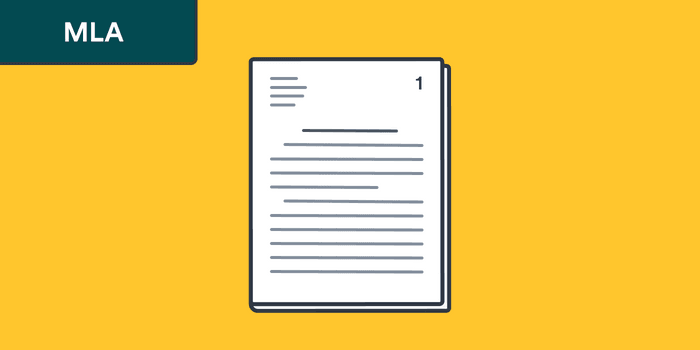
If you were instructed to include a cover or title page for your paper in MLA style 8th edition, these are the requirements you have to meet to have a proper MLA title page.
MLA cover page requirements
- 1 inch margins on all sides.
- Easily readable typeface (like Times New Roman), 11 or 12 points.
- Double-spacing throughout the paper.
- A header in the upper right-hand corner: give your last name, followed by a space with the page number. This should be included on all pages, one-half inch from the top.
- A header in the upper left-hand corner: author's name, instructor's name, the course, and the due date on separate lines and double-spaced.
- Right after, add the title on a new, double-spaced line, centered, in standard capitalization.
- Add a double space after the title and start with the first line of the text.
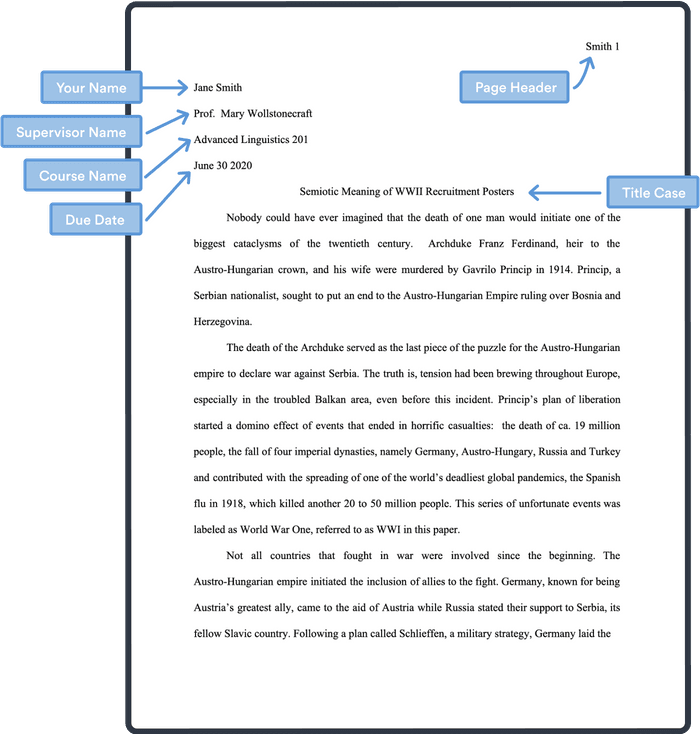
We created an MLA title page template (8th edition) for you to download:
Further reading
For more details not covered in this guide, take a look at the following sources:
📝 Sample papers in MLA Style
📑 MLA Style: Formatting a Research Paper
Frequently Asked Questions about MLA title page
Yes, according to MLA style, this is the only format to follow for any student or professional paper.
Yes, an MLA title page is very easy to format as it does not follow the classic format of a title page. You only have to add two headers in both upper corners of your paper's first page, the title, and right underneath you start writing. Piece of cake!
No. According to MLA style, the title should be written in the same font and format as the rest of the text. The title should only be placed centered.
Yes, a title page in MLA style should be numbered as page 1 of the paper.
If you learn better by watching than by reading, here is a YouTube tutorial that will help you create a title page in MLA style: MLA Essay Format (8th Edition) by The Nature of Writing.

Make your life easier with our productivity and writing resources.
For students and teachers.

- Warner Pacific University Library
- Research Guides
- MLA Formatting
Cover Page Example
Mla formatting: cover page example.
- Abstract Example
- In-Text Citations Example
- Block Quote Example
- Notes and Footnotes Page Example
- Annotated Bibliography Example
- Reference Page Example
- References for this MLA Document
University of Washington
Skin Canvas and Ink:
Tattooing as the Medium of Art in the Twenty-First Century
Janice Nehren
BIS 470: Mexican Art and Culture
Dr. Deborah Caplow
November 29th, 2015
First Page Example
November 29 th , 2015
With twenty-percent of adults, in 2012, having a tattoo, the tattoo industry is becoming one of the fastest growing of modern society (Greenblatt). And yet, even with these high numbers of individuals with tattoos, there are still many taboos relating to this form of art and several connotations made that still marginalize others. Culturally, research shows that tattoos are generally associated with bikers, gangs, criminal activity, prostitution, and even ignorance, often preventing people from obtaining jobs and moving up socially (Greenblatt). Often choosing to confine their tattoos and prevent as much visibility as possible, these individuals find themselves often discriminated against and feel as though they live double lives and in double standards; Dr. Lakra, a Mexican artist and tattoo artist from Oaxaca, Mexico, uses the medium of tattooing to challenge these social stigmas and present the trade of tattooing as an art form to the public that can be approached without social fear. Using photographs, postcards, and magazines between the early to mid-twentieth century, Dr. Lakra alters the original works by “tattooing” the figures in the frames to create works such as, Untitled (Films), Untitled (Maria Montez),Untitled (Emana), Untitled (Retrato de mujer con calaca), Untitled (1930), and Untitled (Símbolo de calidad); these works intentionally play with social juxtaposition through body modification.
...
Brain Food : MLA Guidelines in Writing
- MLA Google Document
- MLA PDF Document
- << Previous: How Do I Do: A Cover Page?
- Next: How Do I Do: An Abstract >>
- Last Updated: Sep 24, 2021 8:12 AM
- URL: https://guides.warnerpacific.edu/c.php?g=1035854
MLA Cover Page Maker for Students
Download template:
Many research papers follow the MLA citation style. This format has specific guidelines for referencing works cited and formatting a title page. Students unfamiliar with MLA style details can now use our cover page generator tool.
When you use an MLA cover page maker , you get a free title page formatted according to the MLA style rules and guidelines. Our expert team is sure you will love this tool that will ease your writing process!
- ️💻 About MLA Cover Page Maker
- ️👣 MLA Cover Page Guide
- ️🔒 MLA Format Header
- ️📝 Examples
- ️🔗 References
💻 MLA Cover Page Maker – What It Does
We did our best to make our MLA cover page generator easy to use. You must fill out the form and click the button once done. The tool will automatically generate the title page for you.
To use the MLA format cover page generator, provide this information :
- Paper title
- Paper subtitle
- Author name (first and last name)
- Additional authors (if applicable)
- Instructor name
You can also specify if the title should be in a header or placed on a separate page.
👣 MLA Format Cover Page Guidelines
A title page is usually not required in MLA style. However, you might need to create one if 1) your instructor requires it and 2) you are working on a group project .
How to Do an MLA Title Page?
Want to know how to write a cover page in MLA format ? Let’s go through the essential elements of this format. Here is a list of MLA cover page elements for you to know how to create one:
- The name of co-authors (for a group project),
- The name of the instructor,
- The course number and name,
- The due date for the project.
How to Format an MLA Title Page?
You must follow the specific formatting rules for an MLA title page. The following are the basic guidelines on how to make an MLA title page:
- Use double spacing.
- Keep the letters centered.
- Use the Times New Roman font style.
- Use the 12-font size.
- Capitalize every word, excluding short terms like a, an, or, in, the, end, etc.
- Place the title of the research paper and subtitle (if applicable) one-third up the page (upper section).
🔒 MLA Format Header
If your instructor does not demand you to create a separate title page for your paper, you can create a running head for the first page. Our MLA header generator will do this in a couple of clicks!
An MLA header is located on the text’s first page in the upper right-hand corner. As for the contents, a header is the same as the title page. However, it requires a different formatting style and is placed on the same page as the actual research paper text.
The MLA format header includes the paper’s title, author name (or names), and course information. The following are formatting guidelines for the MLA header that you must apply to your paper:
- Double spacing,
- Left-justified text,
- Times New Roman font,
- Font size 12,
- Right-justified page number.
Once again, you can skip creating an MLA header if you make a separate title page.
📝 MLA Cover Page Examples: Bad & Better
Here is a good MLA cover page example :
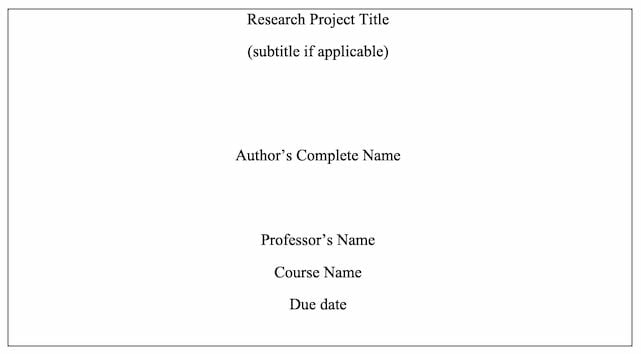
Students' most common mistake in an MLA title page is formatting. Here is a typical example of a wrong MLA format :
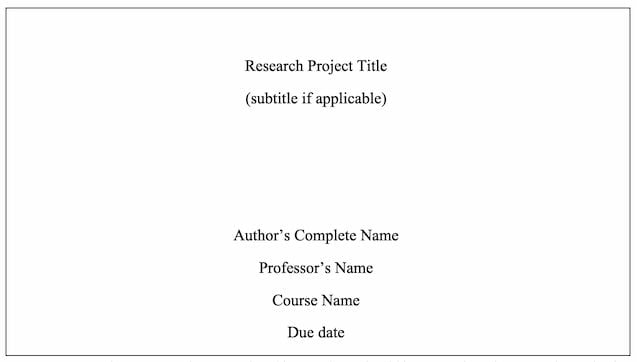
As you can see, the spacing rules are violated here – there should be empty lines between the author’s and the professor’s names.
With the MLA cover page generator, you can skip all the worry about getting the format right. Our professional instrument will ensure you follow all the rules. Give it a try!
🔗 References
- MLA General Format // Purdue Writing Lab
- Using MLA Format | MLA Style Center
- MLA Format | The University of Kansas Writing Center
- How to Write an Appendix in a Paper: Examples and Tips on Writing
- How To Setup Your Software
- Motivational Stories
- Funny Jokes
- Memory Techniques
- MLA Format Sample Paper

MLA Format Sample Paper, First Page. No Cover.

MLA Format Sample Paper, Second Page
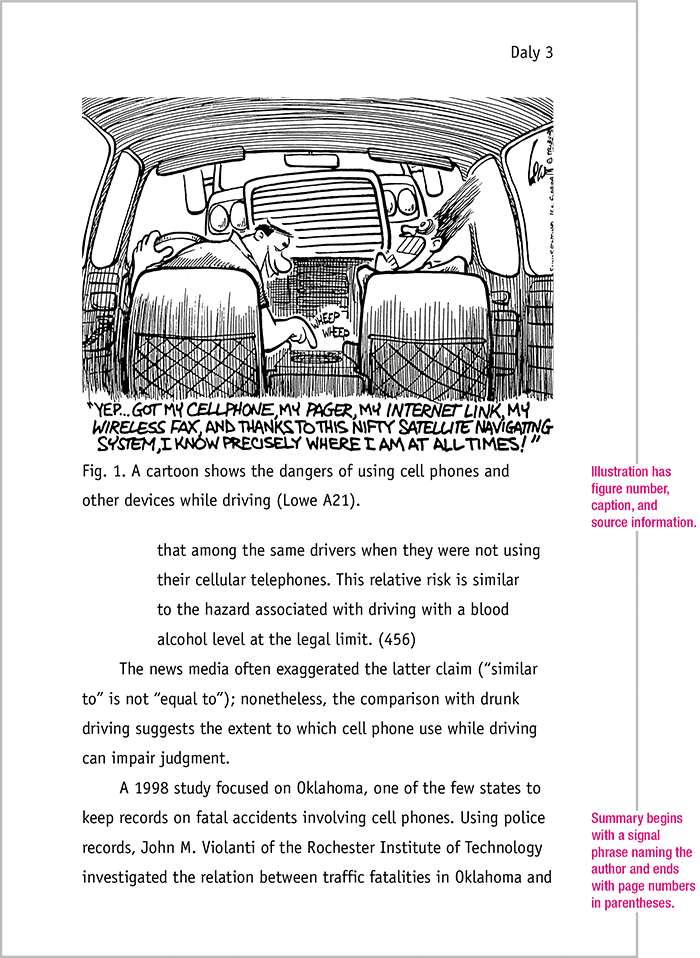
MLA Format Sample Paper, Page 3
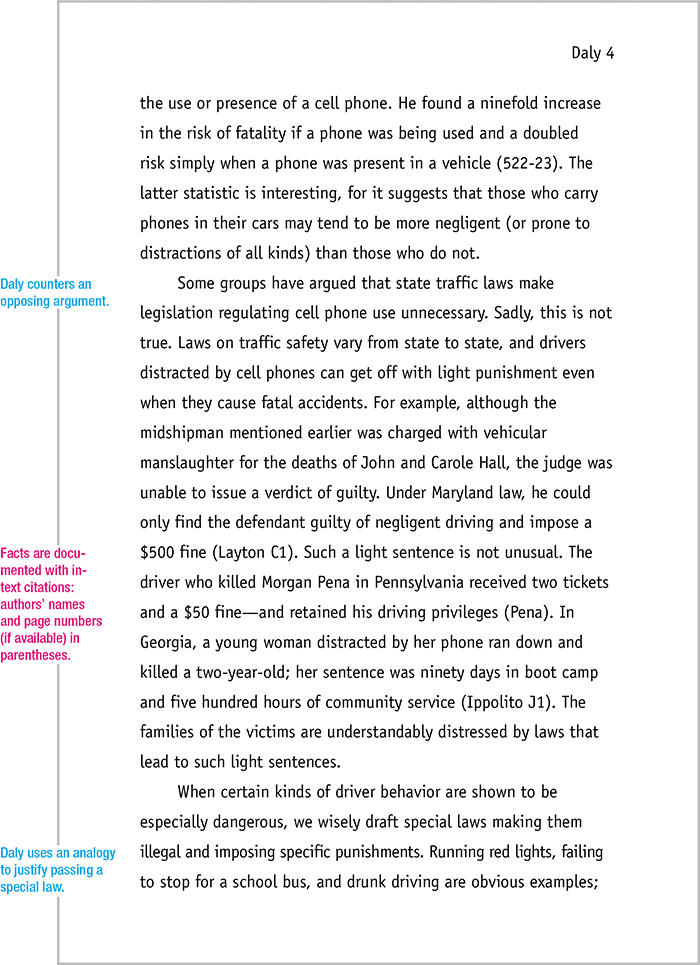
MLA Format Sample Paper, Page 4
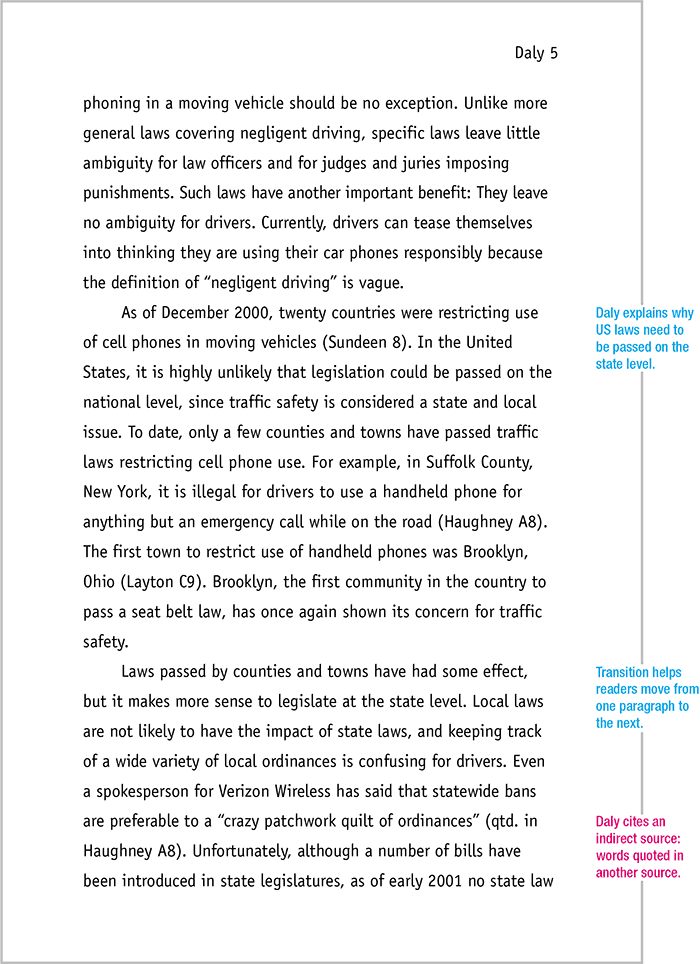
MLA Format Sample Paper, Page 5
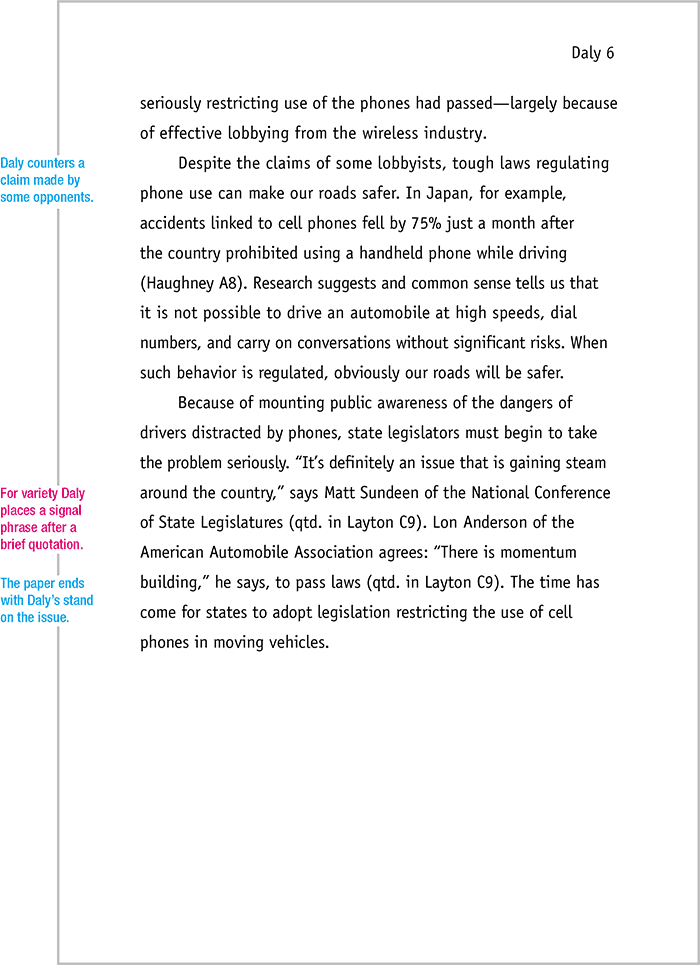
MLA Format Sample Paper, Page 6
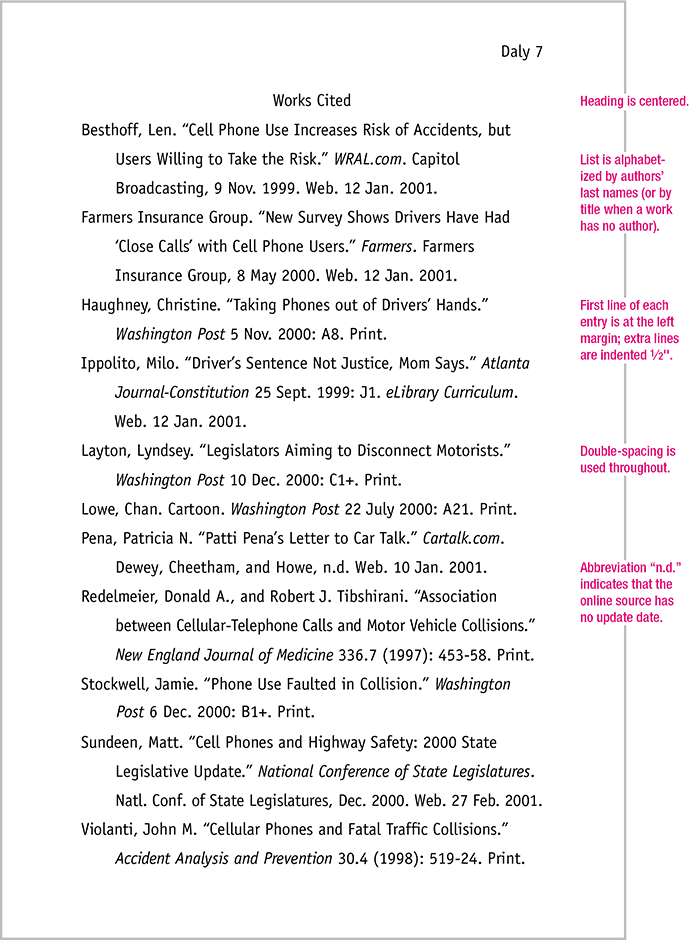
MLA Format Sample Paper, Page 7, Works Cited Page
Source: Diana Hacker (Boston: Bedford/St. Martin’s, 2006).
Visit here for a sample paper with cover page and outline.
Many years later, and it’s still helpful.
thank you really helpful to me
Thank you sooooo much. This really helped on a thesis paper.
good work,at least i gained something…thank you
A useful piece of scholarly material
yall did good on this typing thing
Best paper I have ever read in my young career. Very motivating and thoughtful. It changed my perspective of life. Now I am successful. SIKE
Nice attempt… Helpful for students… We can learn much more from it. Keep uploading more helpful materials.
Leave a Comment
Current ye ignore me @r *
Leave this field empty
Next post: MLA Format Sample Paper, with Cover Page and Outline
Previous post: The Format of the MLA Research Paper
- How to Format the Research Paper
- MLA Format Cover Page
- MLA Format Headings
- MLA Citations
- MLA Format Works Cited
- MLA Sample Paper w/ Cover & Outline Pages
- MLA Format FAQs
- General Format of the APA Paper
- APA Format Title Page
- APA Format Abstract Page
- APA Headings
- APA Format Citations
- APA Reference Page
- APA Sample Paper
AcademicTips.org 1999–2024 • MLA Format • Privacy • Back to top ↑
Purdue Online Writing Lab Purdue OWL® College of Liberal Arts
MLA Sample Works Cited Page

Welcome to the Purdue OWL
This page is brought to you by the OWL at Purdue University. When printing this page, you must include the entire legal notice.
Copyright ©1995-2018 by The Writing Lab & The OWL at Purdue and Purdue University. All rights reserved. This material may not be published, reproduced, broadcast, rewritten, or redistributed without permission. Use of this site constitutes acceptance of our terms and conditions of fair use.
MLA (Modern Language Association) style is most commonly used to write papers and cite sources within the liberal arts and humanities. This resource, updated to reflect the MLA Handbook (9 th ed.), offers examples for the general format of MLA research papers, in-text citations, endnotes/footnotes, and the Works Cited page.
Note: We have chosen to include the date of access for the online sources below. The latest MLA guidelines specify that this is optional, but strongly recommended for sources whose date of publication is unavailable.
Note also: The citation for An Inconvenient Truth below assumes the film has been cited by its title in the text. If it had been cited by the name of its director, the citation would need to begin with Guggenheim's surname. MLA guidelines specify that both styles are acceptable (see, e.g., this "Ask the MLA" page ).
Works Cited
Dean, Cornelia. "Executive on a Mission: Saving the Planet." The New York Times , 22 May 2007, www.nytimes.com/2007/05/22/science/earth/22ander.html?_r=0. Accessed 29 May 2019.
Ebert, Roger. Review of An Inconvenient Truth , directed by Davis Guggenheim. Ebert Digital LLC , 1 June 2006, www.rogerebert.com/reviews/an-inconvenient-truth-2006. Accessed 15 June 2019.
Gowdy, John. "Avoiding Self-Organized Extinction: Toward a Co-Evolutionary Economics of Sustainability." International Journal of Sustainable Development and World Ecology, vol. 14, no. 1, 2007, pp. 27-36.
Harris, Rob, and Andrew C. Revkin. “Clinton on Climate Change.” The New York Times , 17 May 2007, www.nytimes.com/video/world/americas/1194817109438/clinton-on-climate-change.html. Accessed 29 July 2016.
An Inconvenient Truth . Directed by Davis Guggenheim, Paramount, 2006.
Leroux, Marcel. Global Warming: Myth or Reality?: The Erring Ways of Climatology . Springer, 2005.
Milken, Michael, et al. "On Global Warming and Financial Imbalances." New Perspectives Quarterly , vol. 23, no. 4, 2006, p. 63.
Nordhaus, William D. "After Kyoto: Alternative Mechanisms to Control Global Warming." American Economic Review , vol. 96, no. 2, 2006, pp. 31-34.
---. "Global Warming Economics." Science, vol. 294, no. 5545, 9 Nov. 2001, pp. 1283-84, DOI: 10.1126/science.1065007.
Regas, Diane. “Three Key Energy Policies That Can Help Us Turn the Corner on Climate.” Environmental Defense Fund , 1 June 2016, www.edf.org/blog/2016/06/01/3-key-energy-policies-can-help-us-turn-corner-climate. Accessed 19 July 2016.
Revkin, Andrew C. “Clinton on Climate Change.” The New York Times , 17 May 2007, www.nytimes.com/video/world/americas/1194817109438/clinton-on-climate-change.html. Accessed 29 July 2016.
Shulte, Bret. "Putting a Price on Pollution." US News & World Report , vol. 142, no. 17, 14 May 2007, p. 37. Ebsco, Access no: 24984616.
Uzawa, Hirofumi. Economic Theory and Global Warming . Cambridge UP, 2003.

MLA Citation Guide
- Paper Format
- Books/eBooks
- Annotated Bibliography
What Is Required for MLA Citation?
MLA formats features rules and guidelines that make papers and writing projects consistent. They cover the following:
- Layout of the paper (margins, spaces between lines, font size, etc.)
- Citations (source documentation) at end of paper - titled Works Cited
- In-Text citations near quoted or paraphrased information
Two Types of Citations Needed
With MLA format, each information source you use — such as a website you directly quote or an article idea you paraphrase (put into your own words) — must have the following:
1. a Works Cited citation
2. an In-Text citation .
1. Works Cited Citations
Works Cited citations provide details about sources used for your research project. Your Works Cited list goes at the end of your project or paper and includes information about each source that must be in a specific order. MLA calls this information Core Elements . Here is the list of Core Elements in order, including the punctuation that must be included after each element ( MLA Handbook , 8th Edition, page 20):
- Title of source .
- Title of the container ,
- Other contributors ,
- Publisher ,
- Publication date ,
Some sources don't require all of these elements. Click on the link below for more details.
2. In-Text Citations
In-Text citations (also called parenthetical documentation or citation) goes in your paper or project near the information you are using. In-text citations are required when you do the following:
- Directly quote from a source by putting exact wording in quotation marks
- Paraphrase from a source by putting ideas into your own words
- Summarize from a source
Your in-text citation consists of the first item (or Core Element) in your Works Cited citation and a page number , if the source you used has page numbers. Often the first element you use is the author of the source. Click on the link below for more details.
MLA Format Examples
Changes in mla 9th edition.
- << Previous: About MLA
- Next: Books/eBooks >>
- Report an Online Accessibility Issue
- Report a Problem
- URL: https://libguides.dcccd.edu/MLACitation
- Last Updated: Nov 29, 2023 10:15 AM
- Login to LibApps
- Search this Guide Search
- Formatting Guides
MLA Format Title Page: Rules and Examples
- Speech Topics
- Basics of Essay Writing
- Essay Topics
- Other Essays
- Main Academic Essays
- Research Paper Topics
- Basics of Research Paper Writing
- Miscellaneous
- Chicago/ Turabian
- Data & Statistics
- Methodology
- Admission Writing Tips
- Admission Advice
- Other Guides
- Student Life
- Studying Tips
- Understanding Plagiarism
- Academic Writing Tips
- Basics of Dissertation & Thesis Writing
- Essay Guides
- Research Paper Guides
- Basics of Research Process
- Admission Guides
- Dissertation & Thesis Guides

Table of contents
Use our free Readability checker
The Modern Language Association (MLA) format typically doesn't require a separate title page unless specifically requested by your instructor. Instead, the first page of your paper serves as the title page. There should be a header with details like student's name, instructor's name, course name and number and date. But if your paper is professional, you might be requested to prepare an MLA title page.
MLA cover page is requested for research paper writing or publication in a journal. Is it exactly what you need? Then follow the formatting rules that we described below!
Title Page: МLA Format Basics
Many professional and academic documents require an MLA cover page, but necessary information may vary depending on the nature of the paper. According to the MLA format rules, a front sheet is optional and should not be attached to most written works. However, sometimes your instructors may specifically request it, especially for lengthy pieces. For such cases, we have prepared several tips on what details to include in your title page.
MLA Cover Page: Key Elements
There are several crucial elements each MLA cover page should contain:
- Name of your institution (if there is one)
- Paper’s title and subtitle
- Student’s first and last name
- Professor’s first and last name
- Class name and number (if there is one)
Let’s see how to format each of these components.
MLA Title Page: Top
To begin with, you should conditionally divide your MLA title page into 3 parts. In the first upper part, write the name of your university, college, or school.

Then you should consider a title on your MLA cover page. Locate it strictly at the center. But indent one-third from the sheet's top edge. Your work's title should be informative and creative. Place a subheading on the second line. All primary words should start with a capital letter, not minor ones. Do not bold, italicize, or underline any heading or subheading.

MLA Format Title Page: Bottom
Now, let’s figure out how to include other elements in your MLA title page. First, include your first and last name about 2/3rd from the paper's top. Both should be center-aligned. If you have collaborated with other people, also include their names. But write them on two separate lines. Your course, teacher's name, and date should also be indicated at the bottom. Each of these elements must be specified on a separate line. Make sure each line is double-spaced.
MLA Title Page Example
All information should be written in the same font and size as other text in your work. Do not try to use different fonts for any part of this front page, since there is no such requirement in MLA referencing style. You can enter all details according to the MLA title page sample shown below:

MLA Format Template for Your Cover Page
Be aware that MLA cover pages are the exception rather than standard, but some professors may ask to provide them. But it’s still a part of this format template. So you have to follow some special formatting rules:
Top, bottom, left, and right margins should be 2.5 cm (1 inch) wide.
- Double spacing
Your work should be double-spaced from the very first sheet. Remember, there is no need to add extra spacing between paragraphs.
For MLA format, 12 pt. Times New Roman font size is preferred. However, if you decide to use a different font, make sure it is not too large or complex. Your font should be easy to read.
Bottom Line
MLA format title page is not necessary for an academic paper unless instructed otherwise. But if you have decided to make it, pay attention to details described in our article. Generally, you should mention a title, your own and instructor's name, course, and date.
Don’t hesitate to order any type of work from our professional writers! We can guarantee a result beyond your expectations regardless of formatting style and type of academic work. So you don't even need to spend time worrying about references!

Emma Flores knows all about formatting standards. She shares with StudyCrumb readers tips on creating academic papers that will meet high-quality standards.

IMAGES
VIDEO
COMMENTS
The Modern Language Association (MLA) does not require you to create a cover page when you complete your research paper, but some instructors may require it. If your instructor requires your paper to have a cover page, here is how to make it (very easy). This cover page should include: your school name, your research
The Modern Language Association (MLA) does not require you to create a cover page when you complete your research paper, but some instructors may require it. If your instructor requires your paper to have a cover page, here is how to make it (very easy). This cover page should include: your school name, your research
General Guidelines. Type your paper on a computer and print it out on standard, white 8.5 x 11-inch paper. Double-space the text of your paper and use a legible font (e.g. Times New Roman). Whatever font you choose, MLA recommends that the regular and italics type styles contrast enough that they are each distinct from one another.
Here are the steps you need to take to create the perfect MLA title page: At the top of the page, type the name of your high school, college, or university (if applicable). Skip down approximately one-third of the page and type the title of your research paper using title case.
MLA title page format. To create an MLA format title page, list the following on separate lines, left-aligned at the top of the page: Then leave a few blank lines and list the title of the paper, centered and in title case, halfway down the page. All text should be double-spaced and in the same font as the rest of the paper.
MLA format is a widely used citation style for academic papers. Learn how to format your title page, header, and Works Cited page with our free template and examples. Watch our 3-minute video to see how easy it is to apply MLA rules to your document.
1. To insert the page number, select the "Insert" tab along the top of the ribbon. 2. Select the "Page Number" drop-down menu, located on the right-hand side. 3. Choose the option that shows the page number on the top right-hand corner of the page. Once you click this option, it will open the header on your document.
A title page is on its own page before the main paper copy, centers the text, and spreads the text throughout the title page. An MLA heading appears on the same page on which the main paper copy starts, the heading is aligned to the left, and it only appears at the top of the page. For more information on how to create headings, refer to the ...
MLA cover page requirements. 1 inch margins on all sides. Easily readable typeface (like Times New Roman), 11 or 12 points. Double-spacing throughout the paper. A header in the upper right-hand corner: give your last name, followed by a space with the page number. This should be included on all pages, one-half inch from the top.
Formatting the First Page. Since you're not required to provide a separate cover page, you'll need to place your name, the teacher's name, the course and the date on the top of the first page. Include the page number on the first page, following these guidelines: 0.5 inches from the top. Right-justified. Your last name and page number.
Do not use a period after your title or after any heading in the paper (e.g., Works Cited). Begin your text on a new, double-spaced line after the title, indenting the first line of the paragraph half an inch from the left margin. Fig. 1. The top of the first page of a research paper.
This resource can help you with questions you may have around MLA; this document will show you have to properly format in-text citations, form block quotes, structure a cover page, etc. Think of it as your MLA "cheat sheet"! Here is an example, from my own writing, of what a cover page should look like when you have typed in your information.
The following are the basic guidelines on how to make an MLA title page: Use double spacing. Keep the letters centered. Use the Times New Roman font style. Use the 12-font size. Capitalize every word, excluding short terms like a, an, or, in, the, end, etc. Place the title of the research paper and subtitle (if applicable) one-third up the page ...
That's why so many teachers and students like to use this writing style for their middle school, high school, and college research papers. However, while MLA is flexible, it still has a few formatting rules students need to adhere to. ... MLA Cover Page. MLA papers don't typically have a cover page. But, if a teacher asks for one, it's ...
This resource contains a sample MLA paper that adheres to the 2016 updates. To download the MLA sample paper, click this link.
Author's name 2. Instructor's name 3. Course name and details 4. Date of submission 5. University name. If there are multiple authors, list each of their names in separate lines. In the center of the page, center-align the title of your paper. Use the title case while writing the title of your paper.
Here is a sample paper in MLA format that has both the cover page and the outline pages. This paper has 10 pages so if you are under a slow Internet connection, please wait a few seconds for all of the pages to load. This paper is current with the latest MLA manual. - Diana Hacker
1. Add a header. MLA requires specific headings for each of its pages. This might work differently in various word processing programs, but you can select "Insert" from the toolbar and select header or footer. Once the header opens in the document, insert your last name and the page number.
MLA Format Sample Paper, First Page. No Cover. MLA Format Sample Paper, Second Page. MLA Format Sample Paper, Page 3. MLA Format Sample Paper, Page 4 ... Source: Diana Hacker (Boston: Bedford/St. Martin's, 2006). Visit here for a sample paper with cover page and outline. {11 comments… add one} Mark November 8, 2023, 7:49 pm. Many years ...
Summary: MLA (Modern Language Association) style is most commonly used to write papers and cite sources within the liberal arts and humanities. This resource, updated to reflect the MLA Handbook (9 th ed.), offers examples for the general format of MLA research papers, in-text citations, endnotes/footnotes, and the Works Cited page.
MLA formats features rules and guidelines that make papers and writing projects consistent. They cover the following: Layout of the paper (margins, spaces between lines, font size, etc.) Citations (source documentation) at end of paper - titled Works Cited. In-Text citations near quoted or paraphrased information.
MLA Title. Then you should consider a title on your MLA cover page. Locate it strictly at the center. But indent one-third from the sheet's top edge. Your work's title should be informative and creative. Place a subheading on the second line. All primary words should start with a capital letter, not minor ones.
Stakeholders should bookmark this page to access Frequently Asked Questions (FAQs) related to the 2024-25 FAFSA form. This listing of Frequently Asked Questions (FAQs) will be updated periodically and include the date of the update. New and/or updated questions and answers will be marked NEW or UPDATED. The questions below are grouped by the ...
Updates: On March 14, 2024, we updated the 2024-25 FAFSA Updates page. Each time we update the page, we will update this announcement and re-push it to our subscription email. In addition, you can bookmark the page and check it periodically. Issue Alerts: On Feb. 23, 2024, we updated the 2024-25 FAFSA Issue Alerts page.